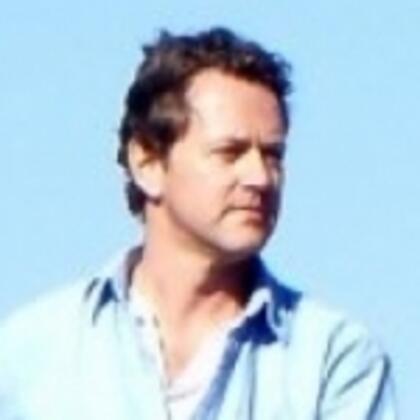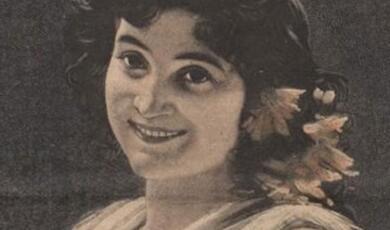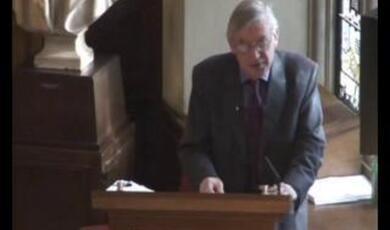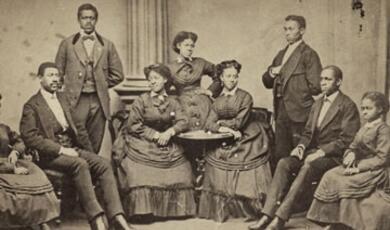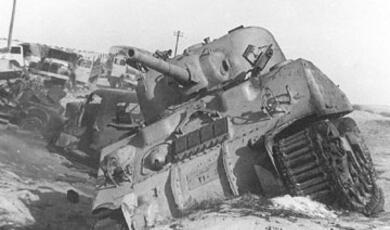15 June 2011
Collect, Protect, Connect: Documenting the Voices of Vanishing Worlds
Dr Mark Turin
For today’s talk, I have opted for an approach that borrows unashamedly from the US Declaration of Independence: namely that in this gathering, we hold certain truths to be self-evident (that linguistic and cultural diversity is to be celebrated and protected, and concomitantly that language endangerment is a serious and important problem). I say this because often these fundamental tenets are not a common ground, as I discovered to my peril when speaking to public audiences who see the inexorable advance of English and the decline of minority speech and cultural forms around the world as natural processes, and who apply a modified Darwinian phraseology of natural selection to social forms and cultural life.
Today, I want to address issues of field methods, collaboration, ethics and the ownership of the cultural and linguistic data that is collected in the field. I believe that these issues are best explained and understood through specific, concrete examples — starting from the local and only then zooming out to the global —in the hope that the tendencies and issues that I reflect on will strike a chord and that the overlap will be apparent.
collect - protect - connect. These three verbs - borrowed from the wonderful New Zealand Film Archive - that has a mission to collect, protect and connect New Zealanders with their moving image heritage, summarise the points I want to make to you this afternoon. Collection is the gathering and documentation of cultural and linguistic data in the field, not in an extractive or acquisitive manner, but in a way that is responsible, collaborative and predicated on trust and increasingly collaborative with not only participation but leadership from local communities. Protection is its archiving and curation – doing the best we can to ensure that these unique cultural and linguistic materials are maintained, migrated and refreshed as new technologies become available. The Connection is made when collections are returned to source communities and when they reach a wider public in print and online.
Landscape slide: Thangmi
Since 1996, my wife Sara Shneiderman (who took many of these photographs) and I have been working with members of the Thangmi community as anthropologist and linguist respectively. With a population of approximately 40,000 dispersed across Himalayan border areas of Nepal (Dolakha and Sindhupalchok districts) and India (the Darjeeling district of West Bengal and a little in Sikkim), the Thangmi speak a distinct, endangered Tibeto-Burman language and maintain an indigenous system of shamanic ritual practice. Aside from some cursory studies in the 1970s, the language and culture of the Thangmi had not received much sustained or serious attention until we started our work in the mid 1990s.
The primary ritual practitioners in the Thangmi cultural world are shamans, known as guru, who transmit their knowledge of myth and ritual through the recitation of oral texts. Chanted in various forms at major life cycle rituals (primarily weddings and funerals) and calendrical rituals, these oral texts are a primary marker of Thangmi group belonging and identity, as well as an increasingly important resource in ethnic campaigns for political recognition. The shamans also act as traditional healers, village doctor and therapist and living Wikipedias of clan affiliation and remembered history.
Children
While education is compulsory, many Thangmi children do not regularly go to school because (a) they are productively useful and necessary for their families and (b) because the parents have decided that nothing that is taught at school is worth knowing. Rote learning, supercilious teachers and an alienating curriculum almost entirely disconnected from the realities of rural life in Nepal, have historically excluded the children of marginalised communities from education. The situation is changing for the better, and my wife and I have been working with a local charity to ensure that for those children and parents who want to study, but who do not have the resources to do so, the minimal costs should be no obstacle.
Two slides of text about Thangmi
Why is Thangmi endangered?
Intergenerational transmission is breaking down.
Schools have historically - as in Europe - disparaged local languages in the interest of regional integration and nation building.
Thangmi has had no written form, so could not be ported to new environments of use
Dissertation
Having worked for many years with Thangmi shamans, I incorporated a number of their oral texts into my dissertation, as part of the textual corpus, which when bundled together with a grammar and trilingual lexicon created what I now refer to as - and only partly in jest - the 'useless' dissertation.
This 900 page manuscript - while much anticipated and fetishised by members of the community (perhaps in part because it was so long overdue) - was not received altogether well by all members of the Thangmi population. As many here today will know, the 1990s and early years of the 21st century were for Nepal one of massive political and social upheaval, with a violent civil war and a level of disturbance like the country had not before seen in its recent history. Through this period of unrest which coincided with my research, the Thangmi community were finding an assertive ethnic voice, or perhaps more correctly, different parts of different Thangmi communities were finding a number of different voices, which when strung together amounted to a loud chorus proclaiming ethnic pride, a traditional homeland, a unique language and positioned the group as both visible and wanting attention from a fast changing nation state. So while some people in the community were still interested in the more abstract idea - and then the product - of a descriptive grammar of their language, others were beginning to ask what it was for, who owned it, why it was in English and how it was going to help them.
Dictionary slide
In part response to these serious and understandable questions, I had already put together what came to be called a Nepali - Thami - English Dictionary two years before the dissertation was completed in 2004. While I thought that this book might have forestalled some of the criticism, in fact, in some ways it heightened it. At least five interesting questions were raised in the course of producing this booklet.
First, authorship. How to credit the person or persons with whom one has written a word list? Has it been co written, is a word list not simply compiled, thus without authors? We resolved, my long term assistant and language teacher (I find the term informant so unfortunate and consultant so terribly World Bank sounding) and I, to list me as the principal author and Bir Bahadur as 'with'. This would also deflect from him some of the heat should there be negative fall out about the text.
Second, there was considerable pressure on us to call our product a dictionary - when really it was nothing of the sort, it was a perfunctory word list, with no context or examples provided. As this was after all a publication to be locally used rather than internationally acclaimed, it made sense to provide, to the extent possible, a product that might be used and desired in Thangmi villages. The compromise was to use the word Dictionary on the cover, but refer to the text as a word list in the introduction, both in English and Nepali (there were introductions in both).
Third was the issue of script and ordering: in which orthography should the Thami words be given? We chose Devanagari, with entries leading from Nepali, in the Nepali alphabetical ordering, believing that most potential users would be comfortable or fluent in Nepali and be searching for Thangmi terms, and also because we did not want to impose an alphabetical ordering on Thangmi at this stage (would we follow the Nepali KA KHA GA etc or the English A B C).
Fourth, the thorny issues of which words to include. At what point does a word become Thangmi. Take the term guru, for example, which is obviously an Indo-Aryan loan is now so hard wired into the Thangmi psyche that to suggest that it has an outside origin would be very disparaging and tantamount to ethnic treason. How about other words, such as Thangmi dese, village, from Nepali desh 'country' (Bangla-desh, Himachal Pra-desh) and ispan for mattress. How and where should such terms be indicated as possible loans, even if to all intents and purposes they are now vernacular Thangmi and have been indigenised, incorporated and accepted?
Last but not least was the question of which ethnonym to choose for the language. The endonym or autonym Thangmi - while more correct - was less well recognised by wider Nepali society, while the strictly less correct exonym Thami was more visible and becoming known. We opted for Thami, but with a long and carefully worded disclaimer to the effect that we knew that many Thangmi would feel this was a missed opportunity to stake a claim for a correct representation. It was, as is so often the case in such collaborations, we opted for a model based on a discussion, compromise, consensus and mediation.
Three dictionaries
And then look what happened! After centuries of silence and orthographical invisibility, two further dictionaries popped up in response to ours, both were larger, bigger and more complete. Dictionaries were suddenly becoming the new unit of value, a kind of competitive and productive display of local lexicography. Almost like an archetypical nursery rhyme or fairly tale, the dictionaries just kept on getting bigger: small (ours), medium (a different dialect, but with Thami first), and large (Nepali first, English second and Thangmi - not Thami - third, from Darjeeling).
The aspiration was for a brhat, or great, comprehensive, complete Thami dictionary, for which our humble undertaking was just an early appetizer. The gold standard and ultimate objects for comparison were large, heavy monolingual Nepali dictionaries, the OEDs of Nepal, and indigenous lexicographers were working towards this process through Thangmifying Nepali words, by including every possible verbal conjugation in their dictionaries to bolster the numbers and engorge the number of pages. Dictionary making was, for the first time in Thangmi history, flavour of the month.
Dissertation vs dictionary
But a question remained, how could the massive differential between the size of my dissertation and the size of the tiny dictionary be explained: what was in the English (foreign) book that was not in the Nepali (local) one? What was I leaving out? Were the community being short changed? I don't want to spend much more time on these issues for now, because there is a lot of ground to cover, but as I am sure you can imagine that these discussions continue.
What are the main points here? Two really, first that such collaborations are always contested, and that the simple refrain of 'giving back to the community' is much more problematic than it might first seem: there are many communities and what appears at first glance to be the right thing to do can set off a chain of consequences which can be quite unexpected. Second, that in these contestations, discussions and negotiations lie very interesting research questions that only bubble up when one starts to connect and engage with indigenous demands. The process is intellectually fulfilling, and not just a mechanical process of cultural repatriation or a moral imperative to give back.
Thangmi novels
Having been standardised - with some agreement across the speech community - the challenge now was that Thangmi was a written language with nothing to read. There was no literature, nothing had ever really been written in Thangmi. Through an organisation in Kathmandu, we organised for two young, literature members of the community to attend a workshop and write a short novella each, one of them was my long-term research assistant who visited Cambridge this summer and whose novel was about a fateful trek that he and undertook to cross into a high alpine valley on the border of Tibet. The character in front with the hat on rolling down the mountain is unfortunately - and quite accurately - me. It’s hard to convey the symbolic importance and power of having your own language in print. Hardened village elders and wizened shamans - almost always illiterate - would dissolve into tears as they watched their grandchildren read aloud from a book, and then in Thangmi, as until that point, books, learning, script and power were all bundled together to effectively exclude them and their culture. They had - as it were - joined the club.
Latte Apa
Let me now move on from the dictionaries and school books, and return to the documentation of Thangmi oral and ritual texts which Sara and I have been involved in for some years now. This photo shows the late Latte Apa, in Darjeeling, India, so named on account of the massive head knot on his head, a powerful shaman, a compelling storyteller and a master of symbolic manipulation - whose magnetic appeal was not lost on our 2-year old son, with whom he developed a strong bond and whom he named Itihas Thami - History Thami - as it was for this coming generation, of our son and his grandchildren, that he was working with us to intensively to record his oral texts and cultural knowledge.
Next photo of Latte Apa
I show these photos of Latte Apa both to acknowledge his massive contribution to our work, but also to underscore the impermanent nature of the holders of such traditions - he died tragically in a monsoon landslide in Darjeeling last year - his was the only house that was entirely washed destroyed, and he was the only victim. The first topic of discussion among the Thangmi community of Darjeeling, on waking up to discover his death, was who would conduct his funeral ritual - as he had for so long been by far the most visible and expert shaman in helping the souls of the dead come to rest. His violent and untimely death underscores the fragility of such knowledge - and the urgency involved in the documentation thereof.
Origins of WOLP
Grew out of the Digital Himalaya Project and also an appreciation of the large amount of innovative work in and considerable funding for linguistics, and a sense that a comparable groundswell had not yet started in anthropology. Linguistics are not always able, trained or interested to document cultural content (e.g. kinship terminology) so its essential that the cultural matter gets collected by professionals who are committed to its rigorous analysis and documentation
Why oral literature? It’s a term that is due for some rehabilitation, even though it sounds to an Anglo-Saxon ear as an oxymoron. It underscores both the method of transmission and the sense that these traditions are on a par with the western literature traditions that make up our oeuvre of inherited knowledge and learning.
Why now? For many communities around the world, the transmission of oral literature from one generation to the next lies at the heart of cultural practice. Performances of such creative works are increasingly endangered. Globalisation and rapid socio-economic change exert complex pressures on smaller communities, often eroding expressive diversity and transforming culture through assimilation to more dominant ways of life. As vehicles for the transmission of unique cultural knowledge, local languages encode oral traditions that become threatened when elders die and livelihoods are disrupted.
Research Triangle: How does one work in such partnerships, and how are technology and globalisation changing these relationships. There is something that I call the paradox of globalisation: the very process which is eroding diversity is also bringing people into closer contact with one another and providing tools to document these vanishing worlds in an ever more nuanced way. Let me address this issue by way of this picture, taken by Marion Wettstein of her husband Alban von Stockhausen, and The shaman Dirga Bahadur Dumi reciting for the ethnographers. Baksila, Khotang district, Nepal, 2006. A research triad - a triangulation of research interest - between local knowledge holder, outside researcher and, most vitally, a community researcher - to whom the shaman is speaking.
Changing role of archives
One of the changes that is going hand in hand with such documentation projects is the transformation of the role and position of archives and museums. They are no longer physical places where collections go to die, curated exclusively by western universities and institutions, but increasingly online virtual environments that hold living traditions and access conditions are minimal if at all present.
Our university museum of anthropology in Cambridge is at the forefront of debates about cultural ownership, physical or digital repatriation, access and preservation - and it’s a tribute to the flexibility and energy of many curators that communities are increasingly choosing for partnerships, where the physical object may remain in a Western holding but that digital rights, avatars and access are controlled by the descendants of the communities whose cultural heritage we are privileged to protect.
In fact, the very rhetoric of archives has changed enormously. Part of this relates to a democratisation of the archival space - community archives - self-archiving, anyone can be an archivist, pushing open a concept that was previously a protected category. While much of the impetus for this is technological, I don't believe it to be the only one.
The same opening up has been happening in libraries also. A recent report shows that the majority of scholars now start their research online. We have ever fewer of places and people like this (slide old library). With this, I think we have also seen what I am calling the return or renaissance of the librarian (Google), as a partner in the research exercise, a specialist who has enormous knowledge and skill in strategies of dissemination, and an understanding of the backend of the publishing process which many scholars would do well to listen to.
So, realising that the landscape was fast changing and that there were new opportunities opening up, in January 2009 I established the WOLP to supportlocal communities and committed fieldworkers engaged in the collection and preservation of all forms of oral literature by providing funding for original research, storage facilities at the University of Cambridge and a digital and print dissemination platform.
How we work
You can read, download, watch everything that we do online since we realise that most people cannot afford to come to Cambridge for our events.
Publishing: The Occasional Paper series was established to support the immediate dissemination of research findings and methodological considerations in the collection of oral literature. A longer paper which will serve as a practical introduction to ethnographic film making is in production and other contributions are under review. Hosted online as a free download in PDF format, and available through a print-on-demand service, these papers will allow scholars and local researchers to disseminate data sets and analyses through a streamlined peer-review process. Published by the World Oral Literature Project, the series is broad in scope and not limited to grantees & Open Book Publishers
To end, I return to the phrase collect - protect - connect. We have a unique opportunity and challenge before us. There are more professionally trained linguists and anthropologists than there are languages and cultures, and while we know the most unusually detailed things about aspects of English, French, Latin and Sanskrit, we still know next to nothing about a large number of the world’s speech forms. 389 (or nearly 6%) of the world’s languages have at least one million speakers and account for 94% of the world’s population. By contrast, the remaining 94% of languages are spoken by only 6% of the world’s people.
We need modest resources to fund urgent anthropology in the field and to support the digitisation of legacy historical materials so that they are future proofed and do not become orphaned collections stuck in a shoebox in someone’s attic.
We need partnerships, open standards, knowledge networks and communities of practice so that we can act in a coordinated way to document these oral cultures before they disappear without record.
In short, we need people to know this story and we need your support.
© Mark Turin, 2011


 Login
Login



